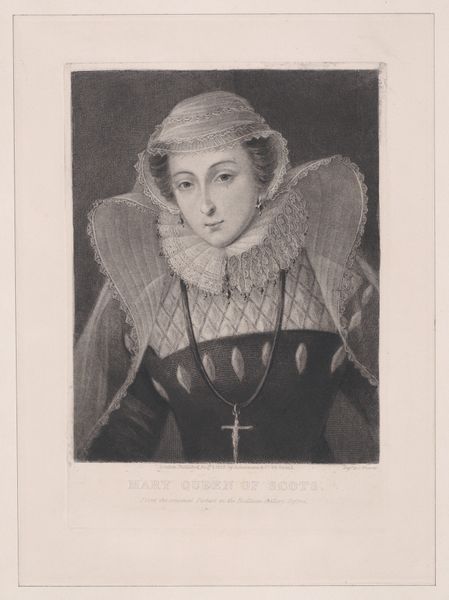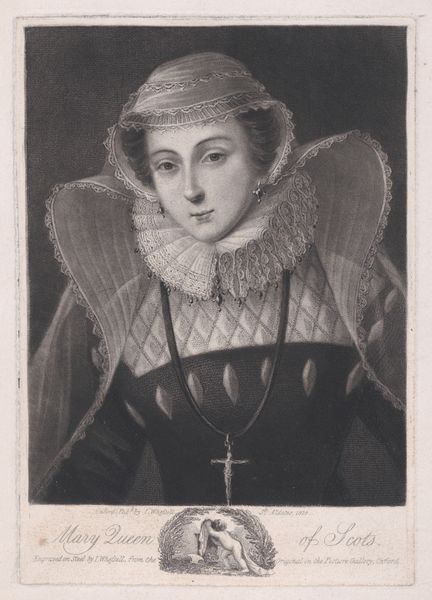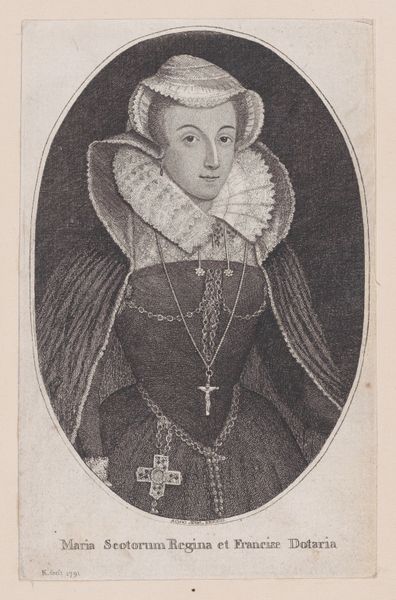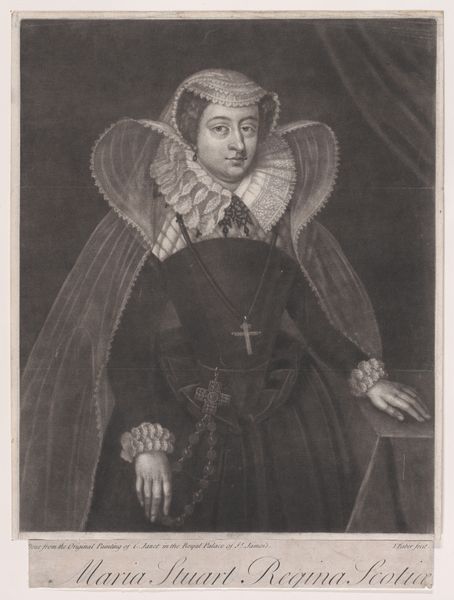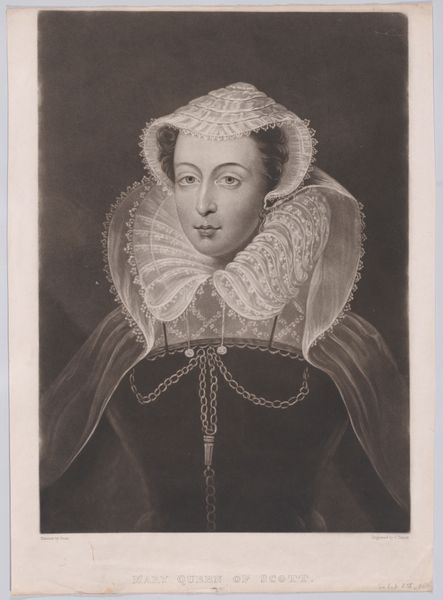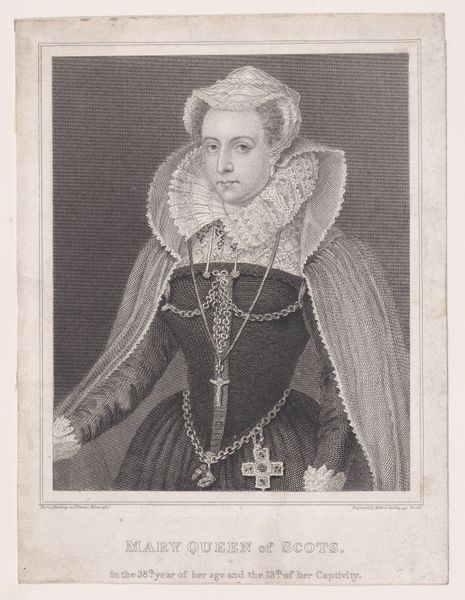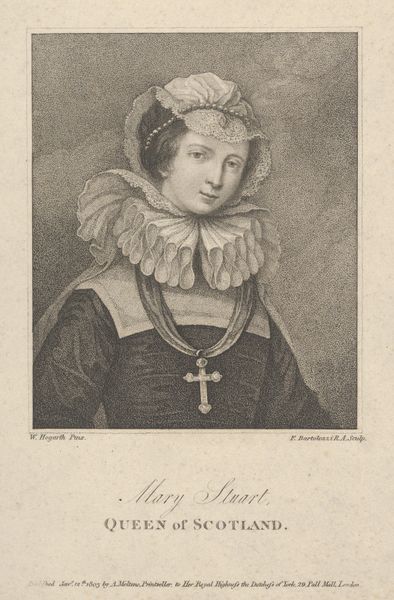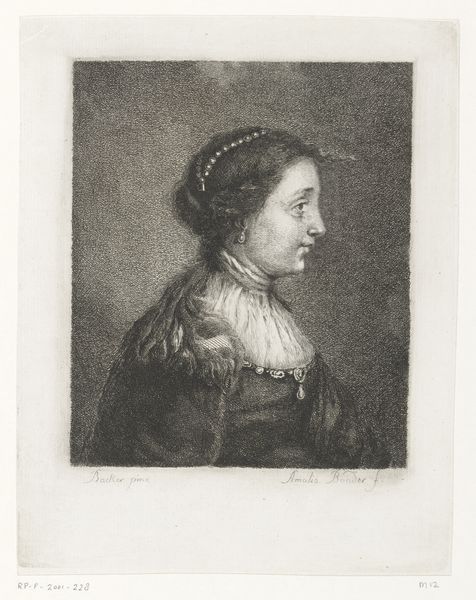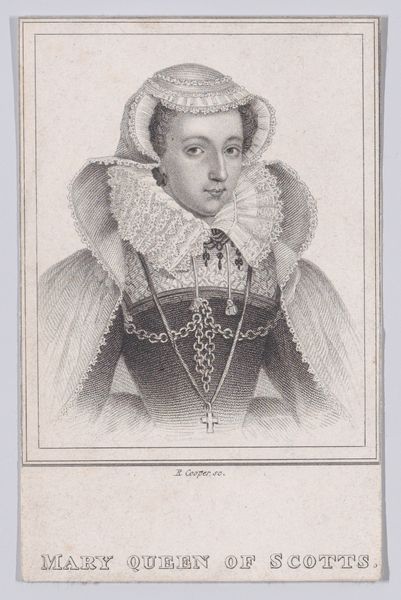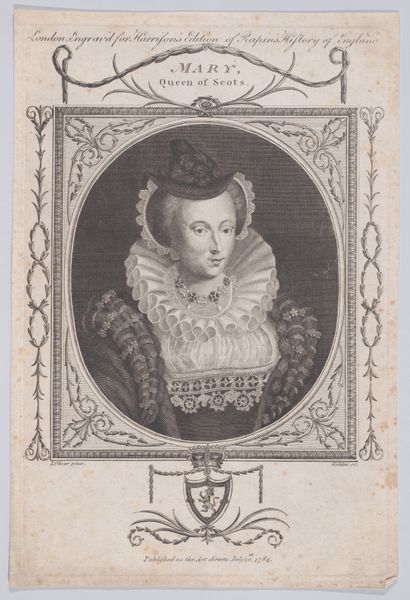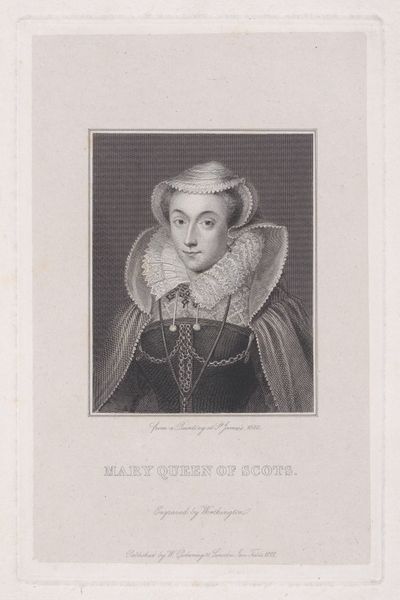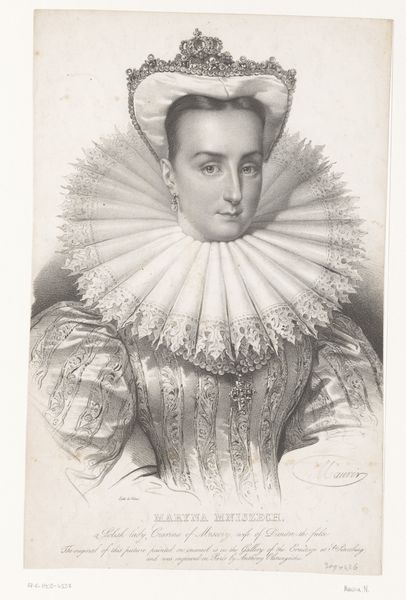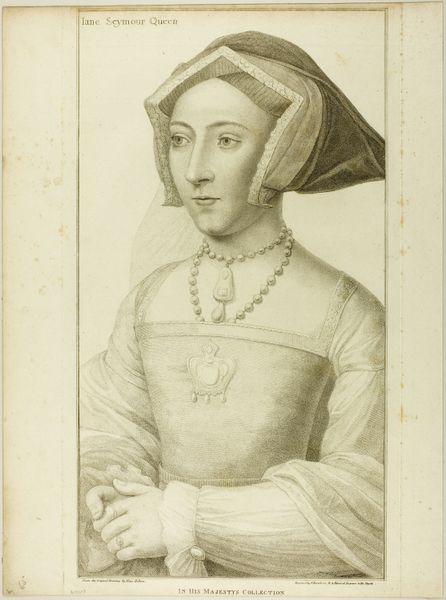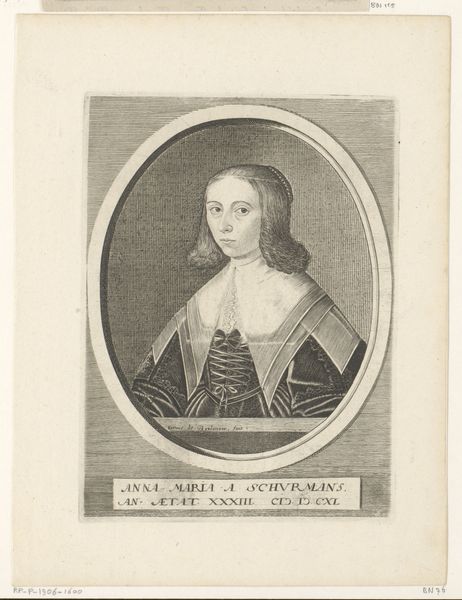
Mary, Queen of Scots (identified as Mary of Guise) (from "The Scottish Gallery; or, Portraits of Eminent Persons of Scotland") 1797
0:00
0:00
drawing, print, engraving
#
portrait
#
drawing
#
neoclacissism
# print
#
history-painting
#
engraving
Dimensions: Sheet: 7 13/16 × 5 3/8 in. (19.9 × 13.7 cm)
Copyright: Public Domain
Curator: Here we have a portrait identified as Mary of Guise, featured in "The Scottish Gallery; or, Portraits of Eminent Persons of Scotland," crafted in 1797. The artist, Edward Harding, captured this historical figure through engraving and printmaking. Editor: Ah, Mary of Guise. She has this… air of formidable elegance about her. Very composed, very much in charge. I find it difficult to resist historical portraiture, especially rendered in this understated grayscale style. The dress…what do you call it? Curator: It’s an intriguing depiction, isn't it? The dress features quite an impressive ruff and puffed sleeves, indicative of the period's fashion, and certainly conveying status. But the use of a stark, monochromatic palette actually lends a feeling of severity. Symbolically, we are clearly meant to understand power and the weight of duty, don't you think? Editor: Absolutely! You read into that dress as a symbol of high status in many periods of history. But this goes far beyond status; those geometric lines, the precision—there's such clarity and a focus here that borders on intimidating. Tell me more about the cultural context… what might Harding have been trying to say? Curator: Given the neo-classical movement influencing the art of the time, we can view the image as participating in an effort to emphasize order and reason, even when looking back to history. The relatively unadorned style, especially in contrast to the rich clothing she wears, seems calculated to present Mary of Guise as an almost idealized figure, more symbolic than personal, wouldn't you agree? Editor: The stark lines amplify that effect, yes! By using grayscale—essentially erasing the potential distractions of color—the weight of the cross hanging down from the Queen's neck appears heavier and almost sad to me, somehow. Is there something to this or am I projecting? Curator: The cross indeed carries significant weight. Mary of Guise's role as a Catholic figure in a time of religious upheaval would be something viewers at the time might automatically pick up. Editor: Well, I love the play between restraint and authority, personally, and feel transported when looking at her as I consider these dualities and this tension and this historical distance. Curator: Yes, and whether the image corresponds to what the sitter really looked like or how she has been mythologized across history is something for all of us to meditate on.
Comments
No comments
Be the first to comment and join the conversation on the ultimate creative platform.
